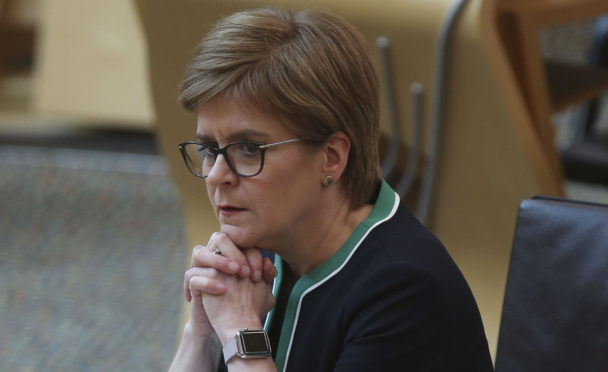
First Minister Nicola Sturgeon has outlined the next steps in Scotland’s lockdown exit strategy.
The update to the Scottish Government’s lockdown exit framework paper, published last week, sets out possible options for lifting restrictions when evidence shows it is safe to introduce them.
This includes Scots being able to expand their “social bubble” by meeting up with close family and friends outside their household, and also allowing more time for outdoor exercise.
Speaking at the Holyrood daily briefing on Tuesday, the First Minister said it was “highly unlikely” that any of the current restrictions will be lifted when the lockdown is reviewed again on Thursday, as there are still too many people infected with the virus.
Ms Sturgeon said modelling suggests the transmission rate in Scotland is higher than elsewhere in the UK. It is estimated there are currently 26,000 people with Covid-19 in the country.
She said: “The hard fact is we must see further restrictions in new cases, hospital and ICU admissions, and deaths to be sure the overall level of infection and the R number are lower than they are now.
“That means for the moment we do need to stick with the current lockdown restrictions.”
The First Minister outlined all the options currently being considered for when it is safe for restrictions to begin to be lifted, although she stressed these are “not a list of things we will definitely do by certain dates”.
She said: “This is going to be a long process with different phases along the way and we will only implement these changes when we are as certain as possible it is safe to do so.
“We are considering firstly if and how we can safely change our advice on spending time outdoors, to allow exercise outside to happen more than once a day, so long as we continue to stay apart from people outside our own households.
“Second, we are also considering if a slight relaxation in the rules to allow meeting up with a small, defined group of people from other households in a sort of bubble might be possible – even if initially that was only possible out of doors and not indoors.
She added: “We have to consider carefully the impact on the spread of the virus and we also have to think through how such an approach could be implemented in practice, and how the limitations of it could be enforced if necessary.”
The options the government is currently considering are:
- Allowing exercise more than once a day
- A “social bubble” where people can meet with a small group from other households outdoors – not including “shielded” groups
- Resuming NHS and community care services
- Allowing some businesses, like construction, retail and manufacturing, and rural businesses, to reopen carefully and safely
- Considering a phased approach in allowing some pupils to return to school
For schools, the First Minister said a dedicated Education Recovery Group is looking at allowing vulnerable children back first. Certain year groups could also go back ahead of others – perhaps starting with a P7 to S1 transition – to ensure social distancing can be implemented.
She added: “I need to be clear, a return to school might not be possible at all this side of the summer holidays.
“But we are considering whether some groups of students, such as vulnerable children, children who are making the transition from primary to secondary school, or who are studying for national qualifications could return to school ahead of others.”
Latest updates:

Enjoy the convenience of having The Sunday Post delivered as a digital ePaper straight to your smartphone, tablet or computer.
Subscribe for only £5.49 a month and enjoy all the benefits of the printed paper as a digital replica.
Subscribe